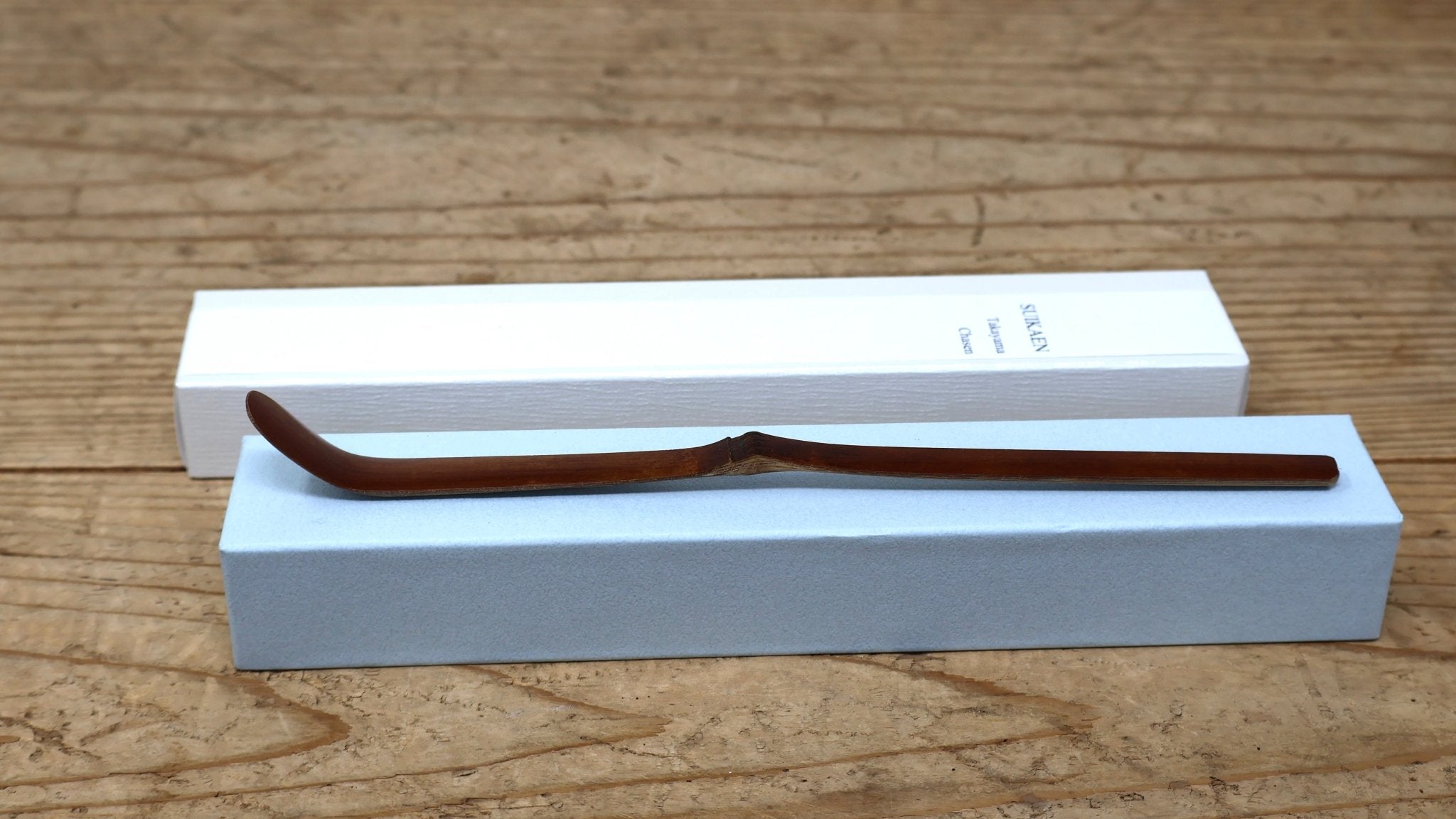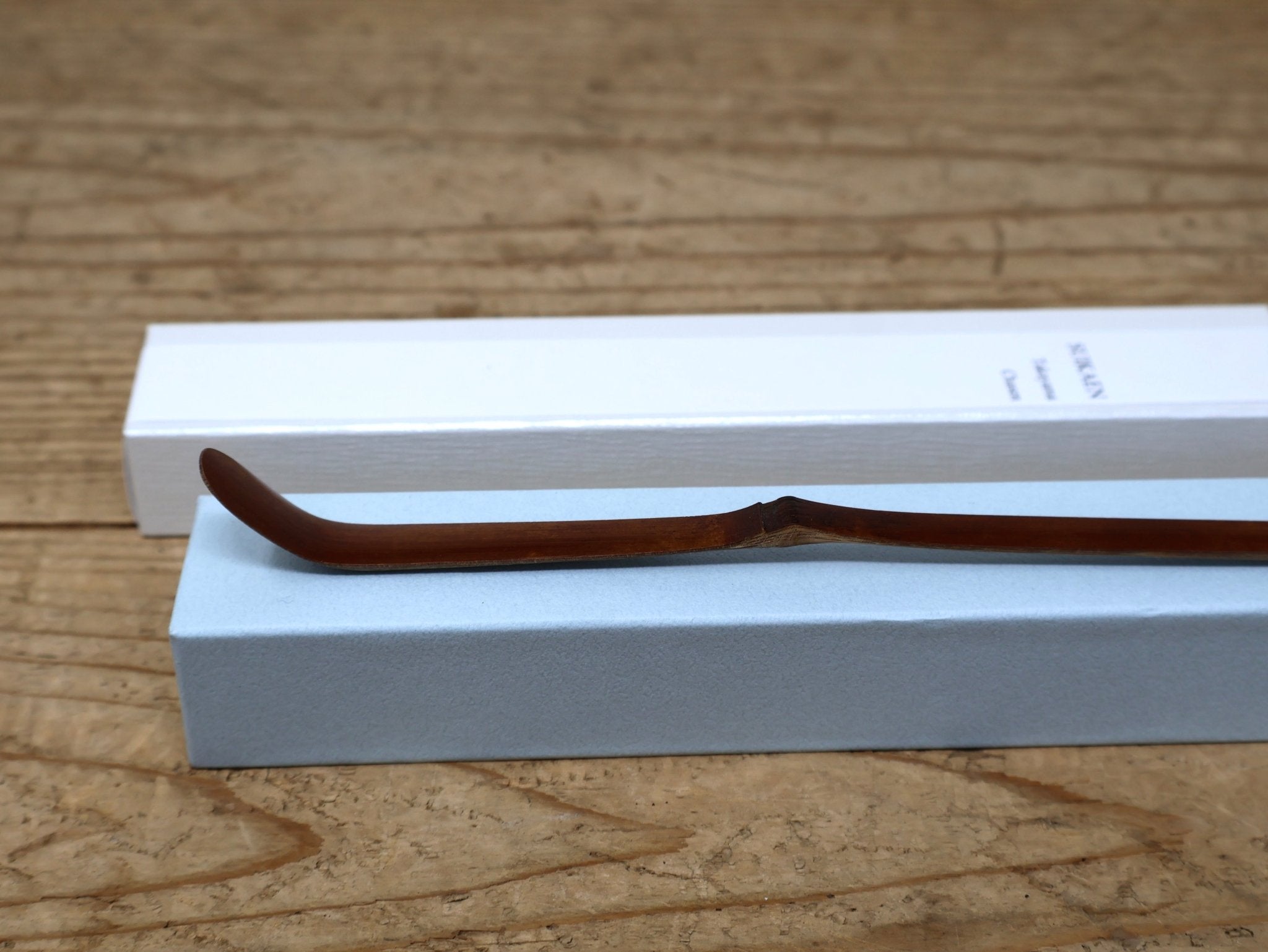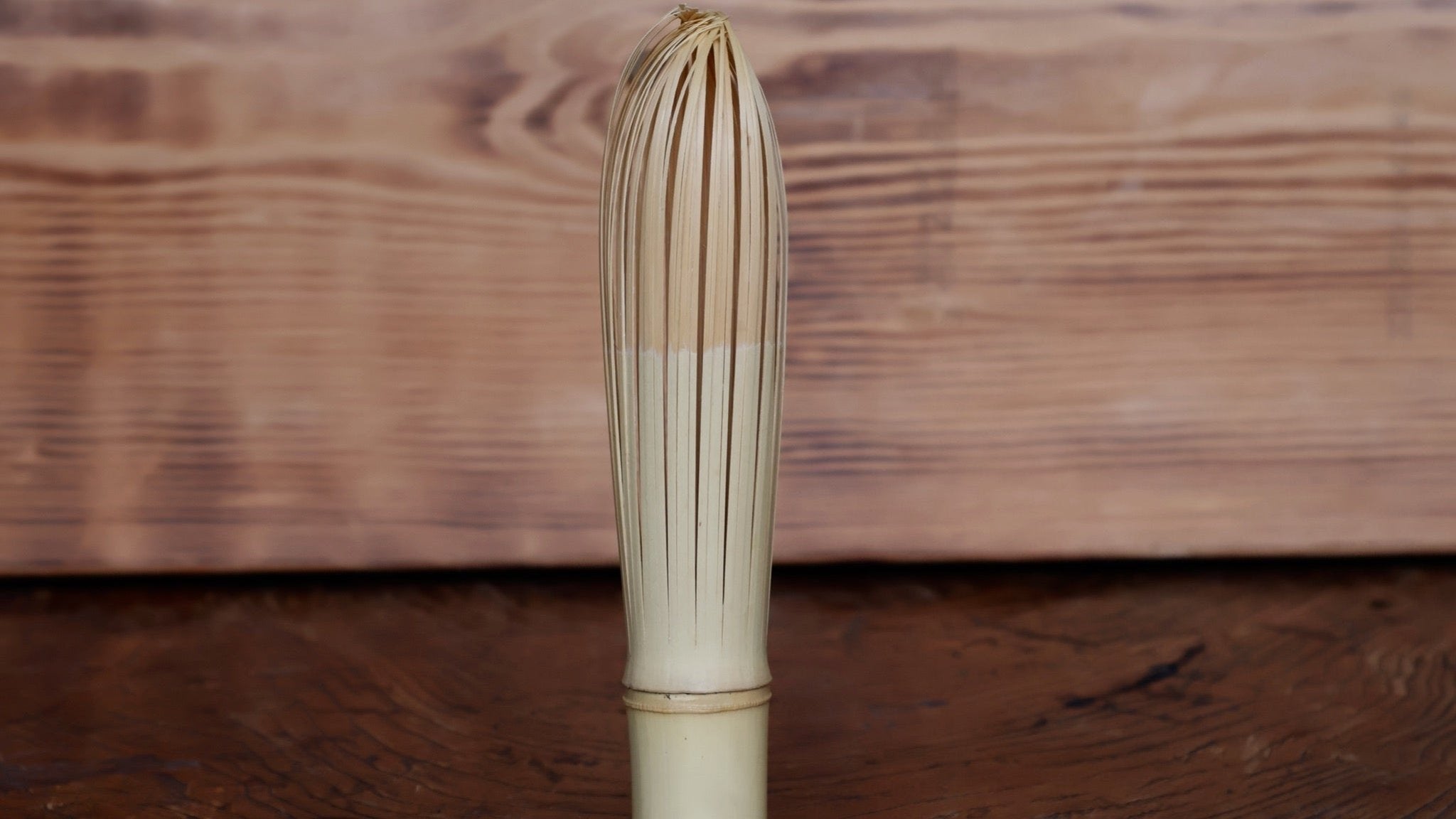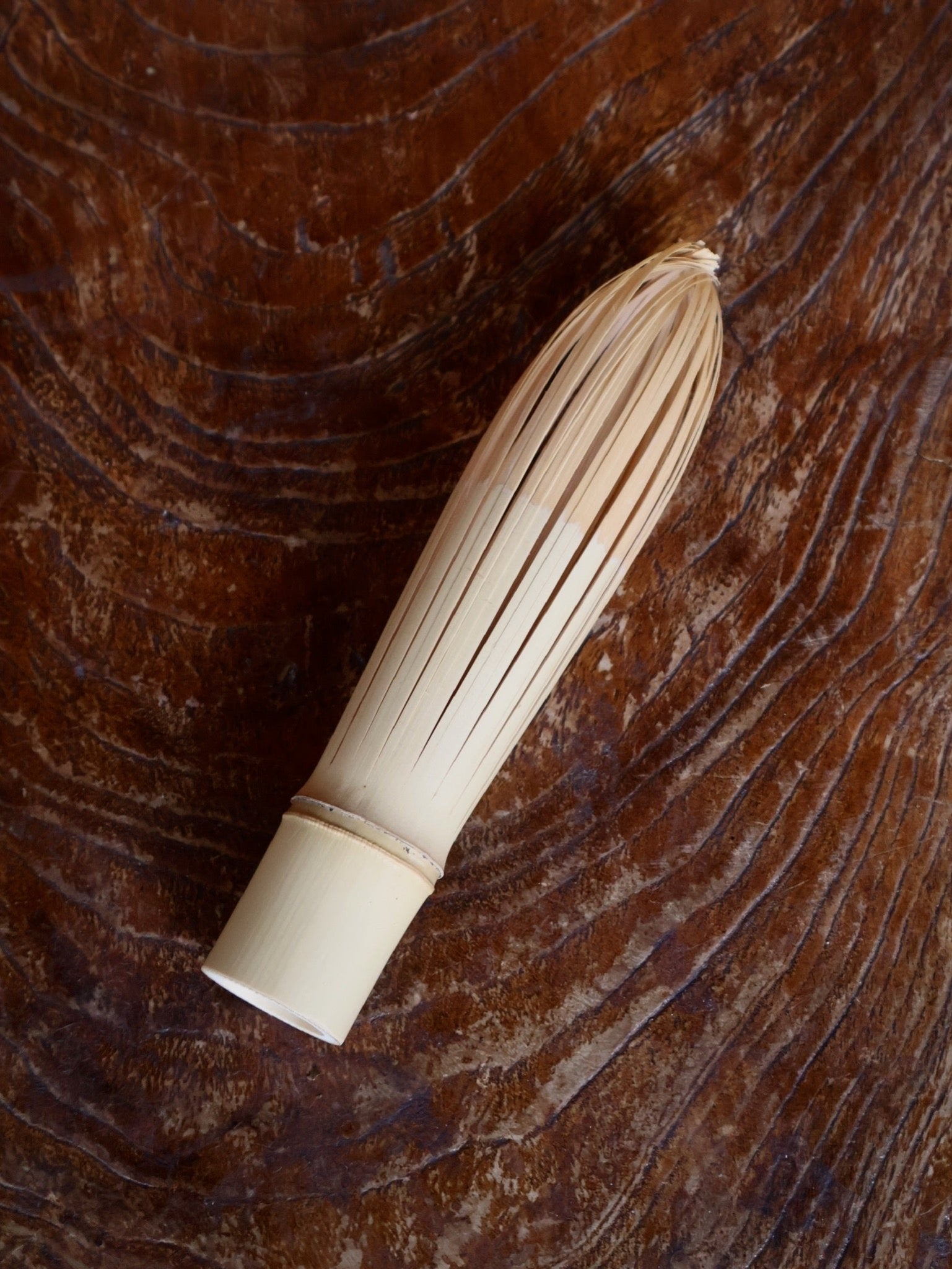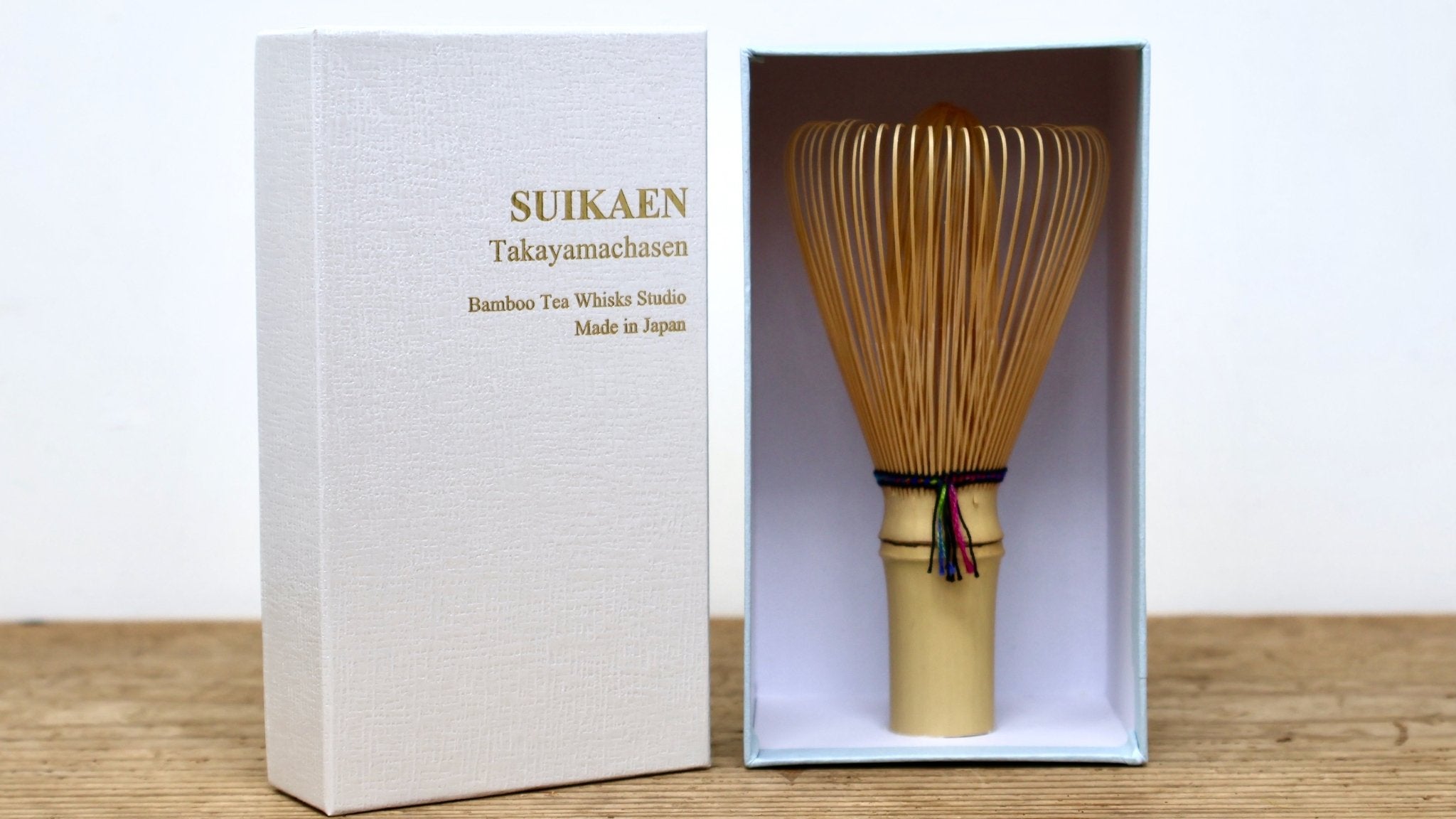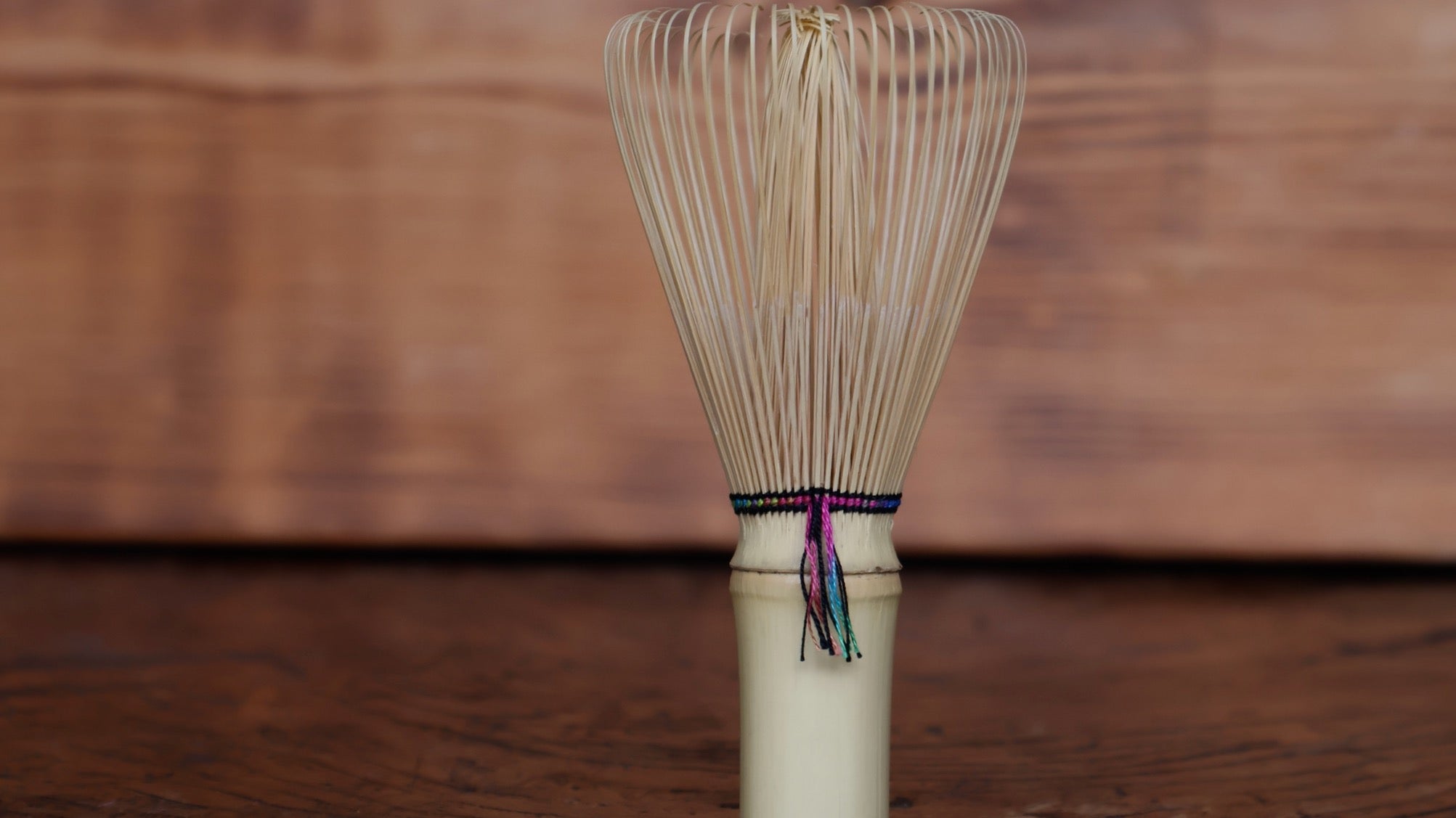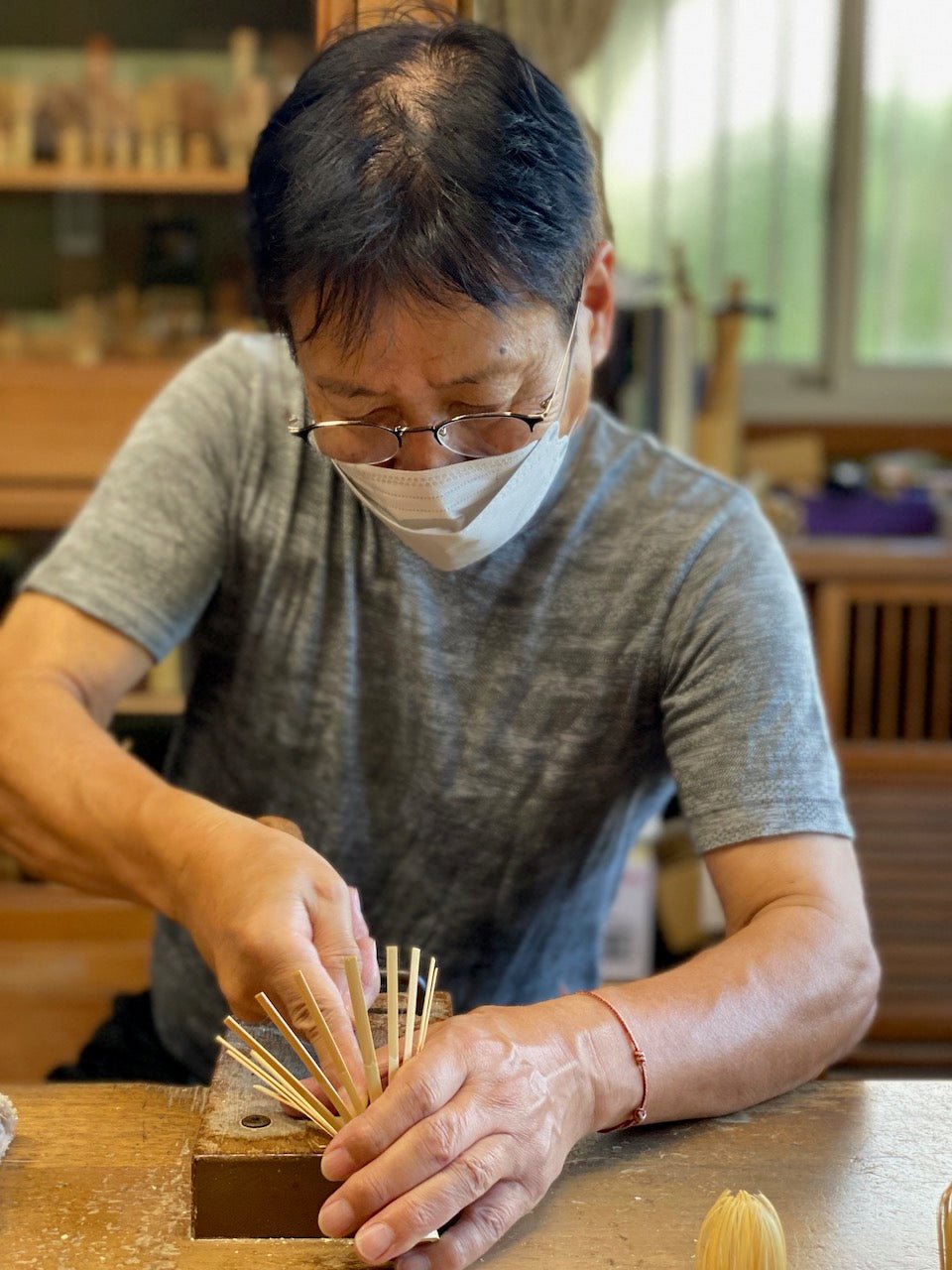
TAKAYAMA CHASEN, TANIMURA BAMBOO ARTS
Yasaburo Tanimura (25th generation) is the current head of a family enterprise that was created half a millennium ago. He is one of fewer than 20 'shokunin' (master artisans) recognized by the Japanese government to preserve this ancient art.
The traditional tea whisks of Takayama are an excellent example of simplicity and superb attention to detail. Beyond the goosebumps that are due when you hold an item crafted by a family with a 530 year history devoted to a single art, you will find that these whisks perform incredibly well when you prepare your favourite drink.
Takayama has been the most important origin for chasen since the Muromachi period (1336-1573). The legend reports that Juko Murata, known as the first 'wabi-cha' tea practitioner, commissioned a batch of whisks from a local bamboo artisan: Minbunojo Nyudo Sosetsu Takayama. Murata gifted the whisks made by Takayama to Emperor Go-Tsuchimikado, who was fascinated. The whisks that you hold today are made in a very similar way!
The Process
原竹 (Haratake): the artisan harvests bamboo of the right dimensions during the cold season; he boils the bamboo and allows it to dry outdoors (exposed to the sun, wind and winter cold) for a couple of months. Finally, the bamboo is aged over 2-3 years in the shade.
片木 (Katagi). On the top part of the bamboo (which will become a whisk), the artisan uses a very sharp divide the stalk in 16 parts; each is split in two layers, keeping the outer one and discarding the one inside.
小割 (Kowari). The artisan splits each section into much smaller bristles, which are then carefully separated.
味削り (Ajikezuri). The shokunin uses boiling water to soften and then shape the whisk. Needless to say, this process is extremely difficult.
面取り (Mentori). This process is there refinement of each bristle.
下編み (Shitaami). Every chasen has a thread woven between the handle and the bristles.
上編み (Uwaami). Addition of two additional threads at the same location.
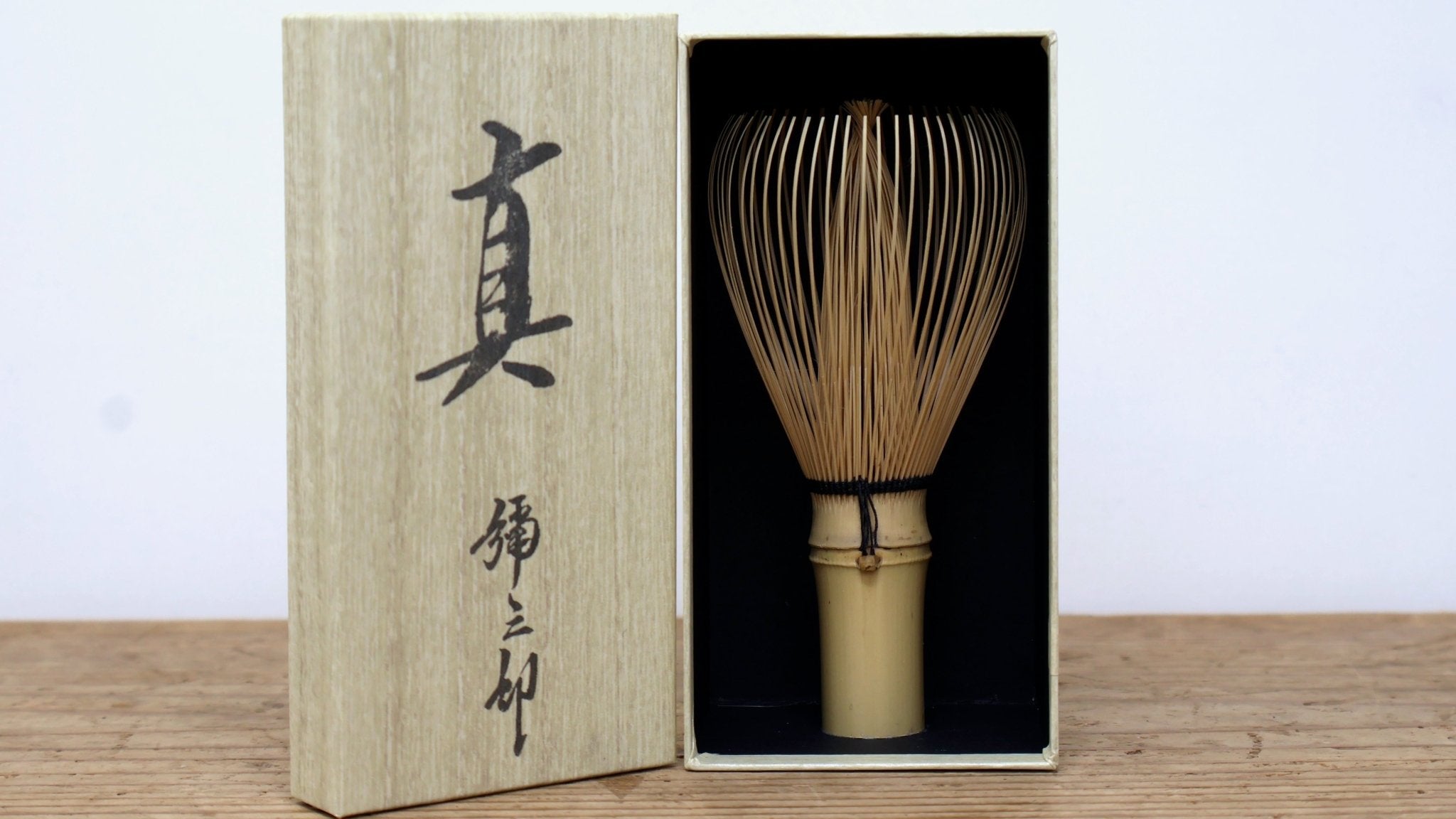
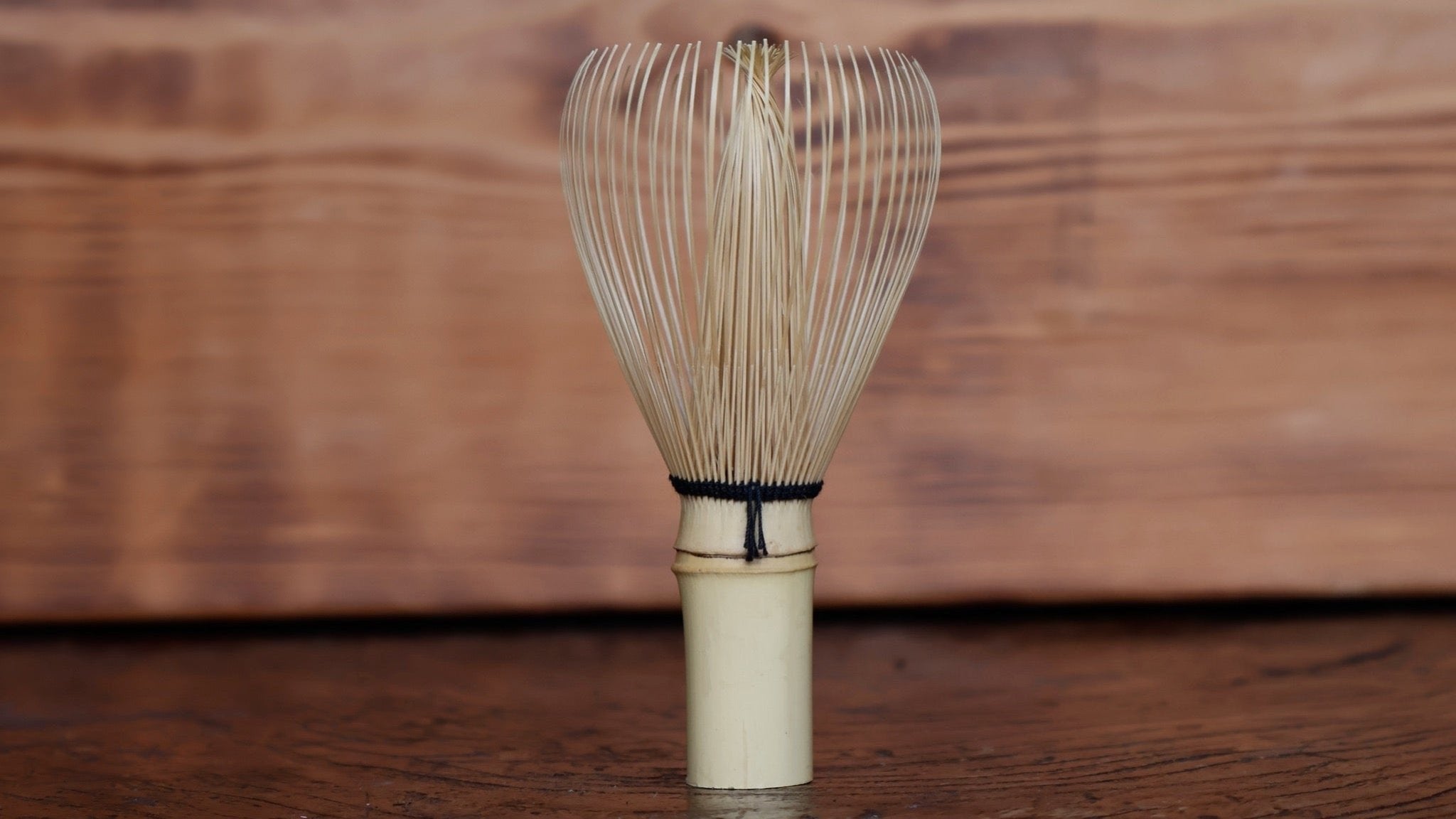
SHIRATAKE SHIN CHASEN | TANIMURA YASABURO
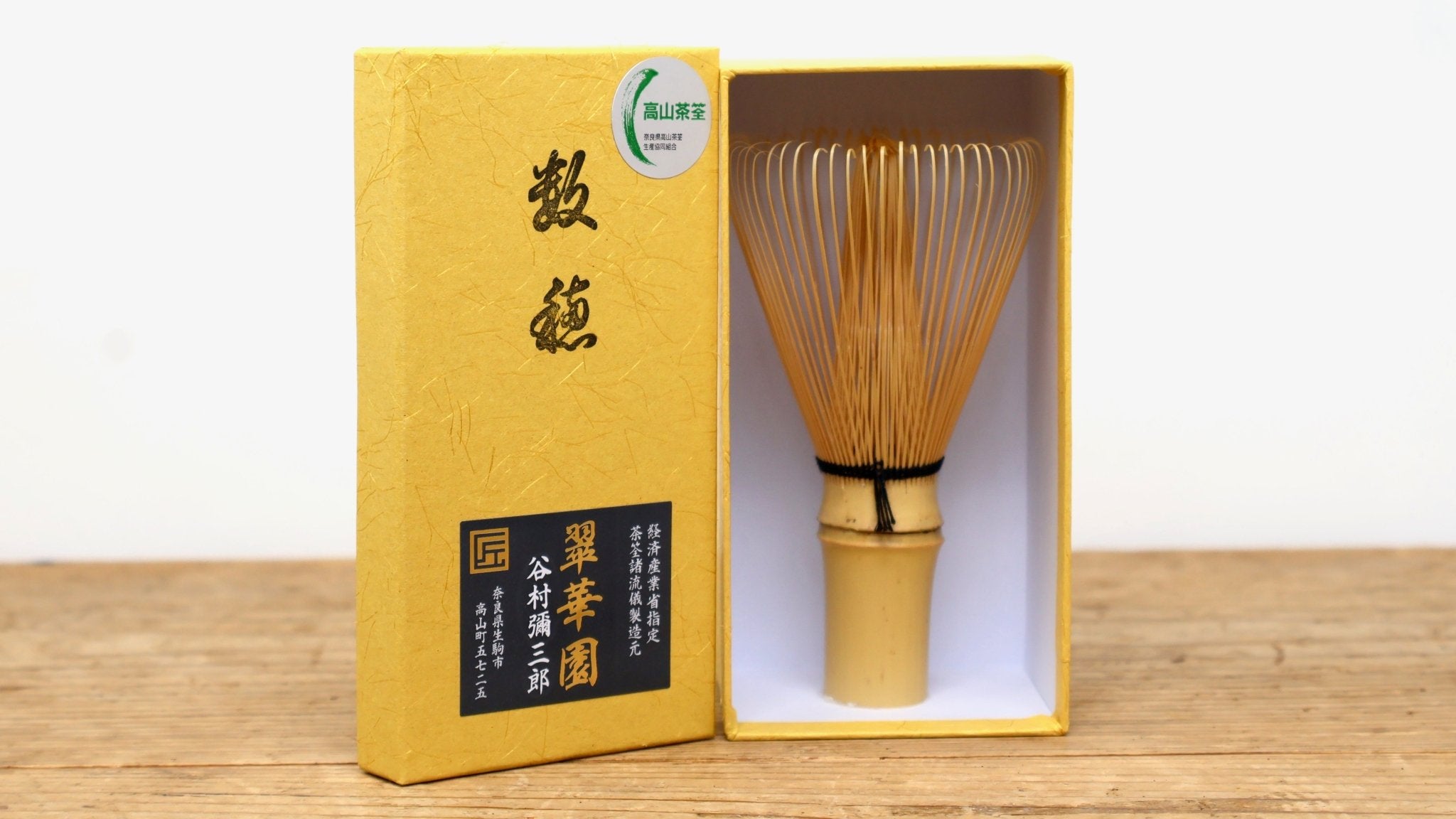
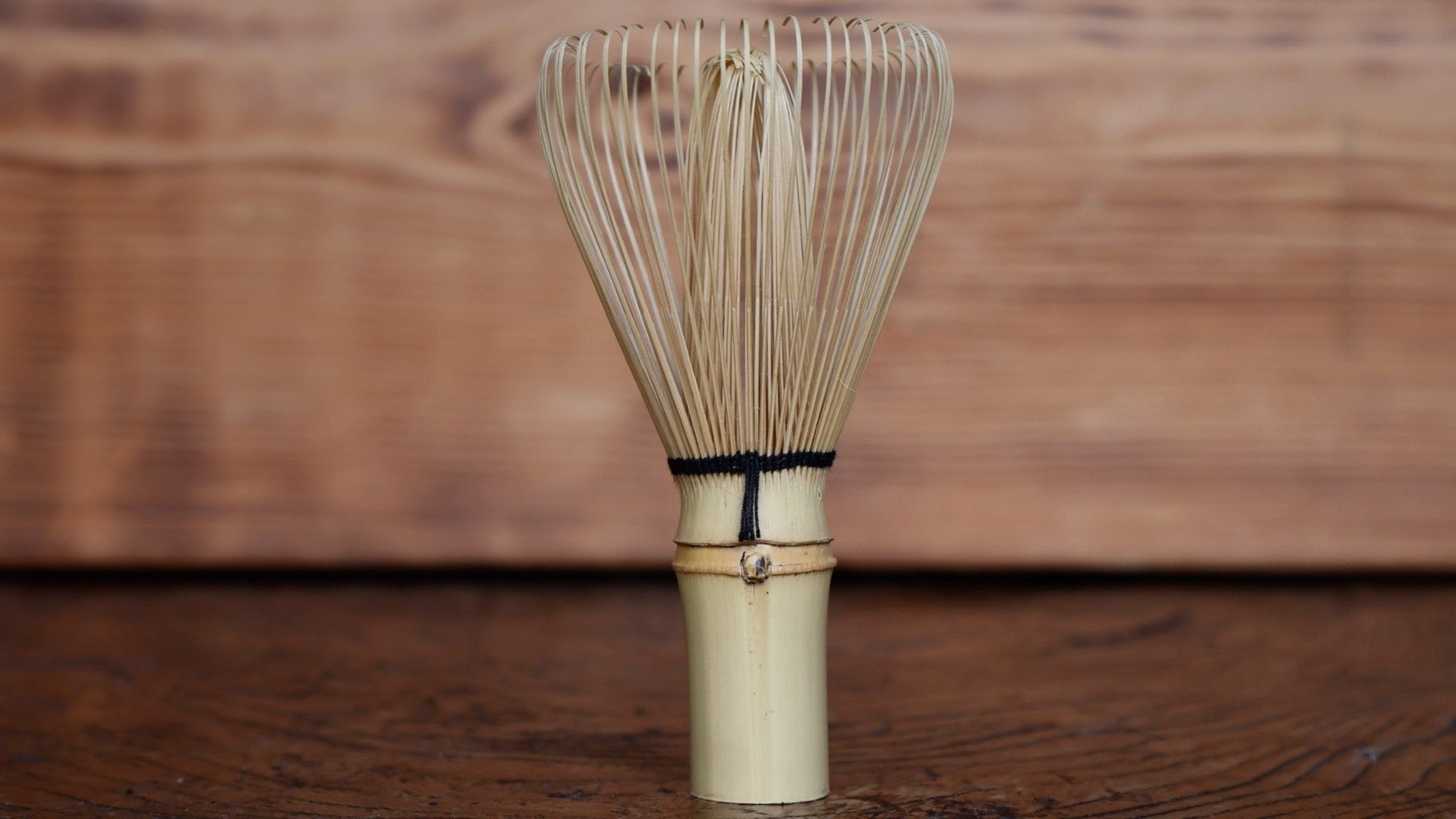
SHIRATAKE KAZUHO CHASEN | TANIMURA YASABURO
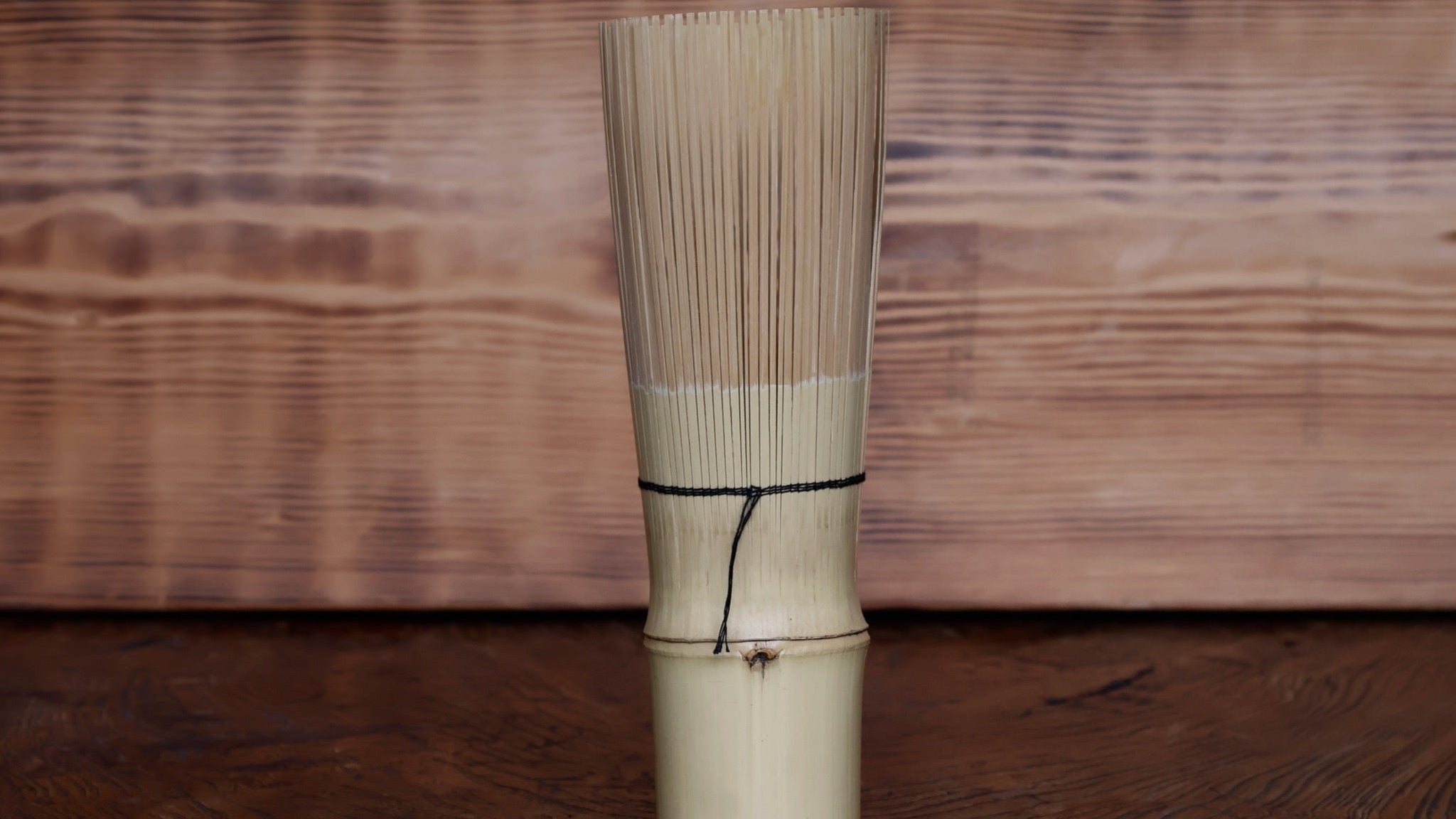
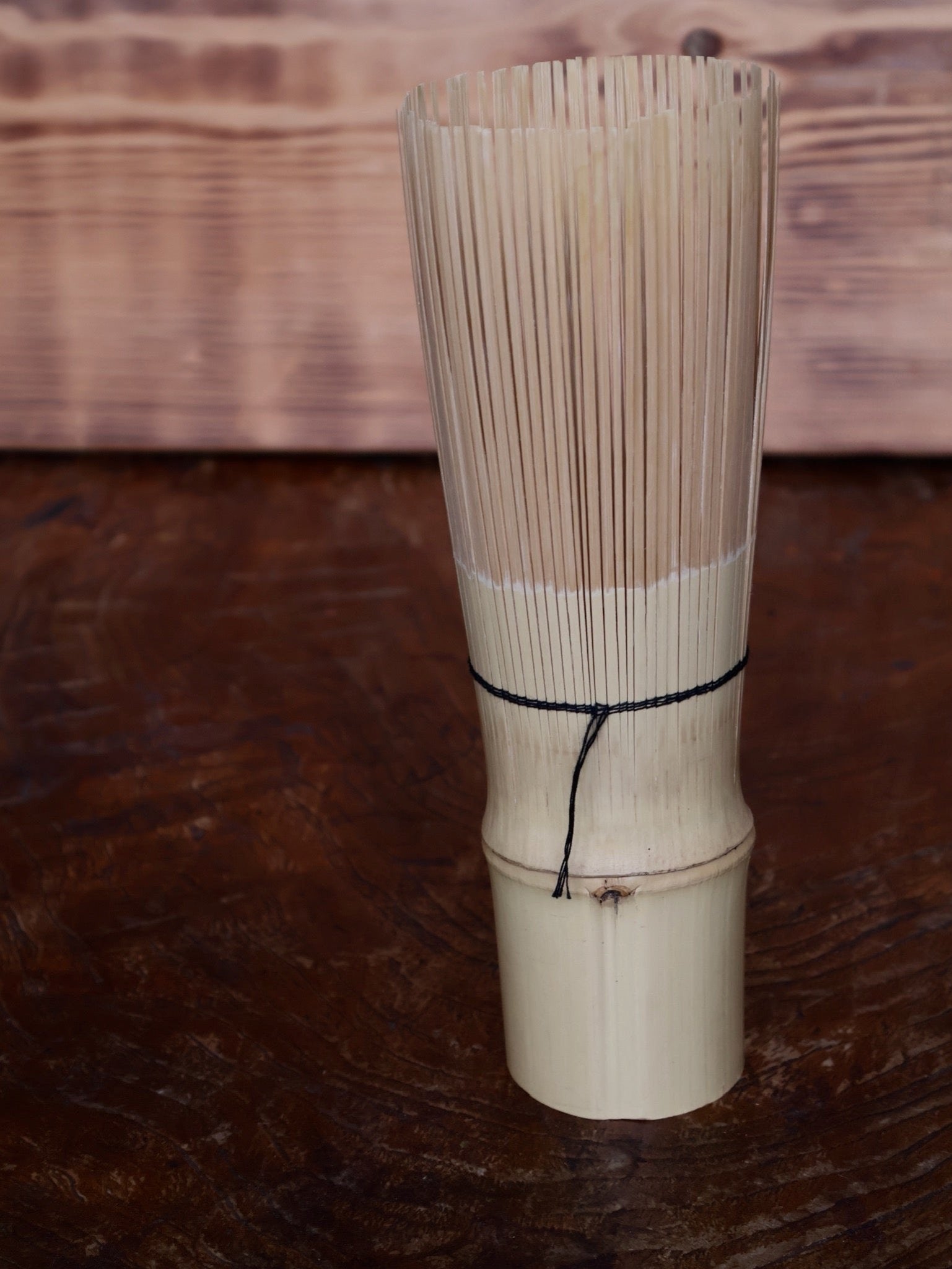
BUKU BUKU CHASEN | TANIMURA YASABURO
